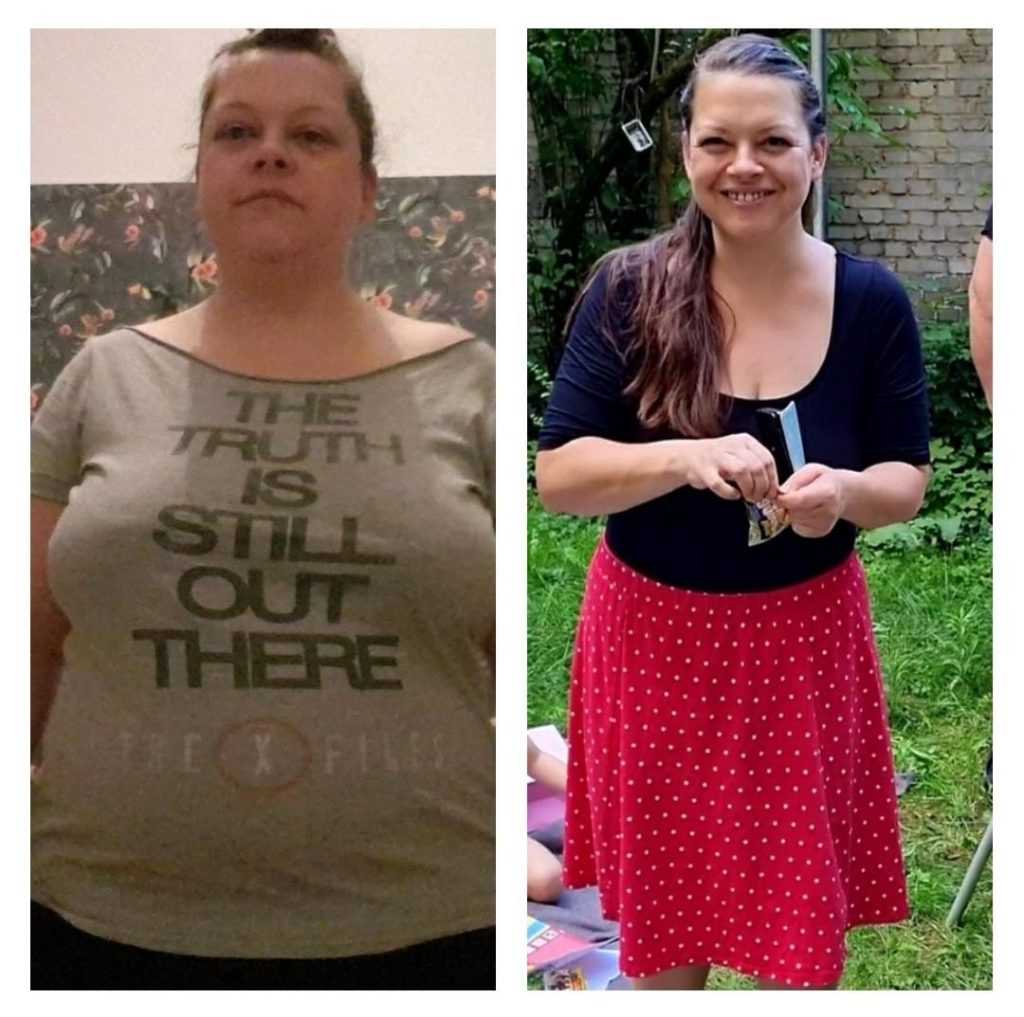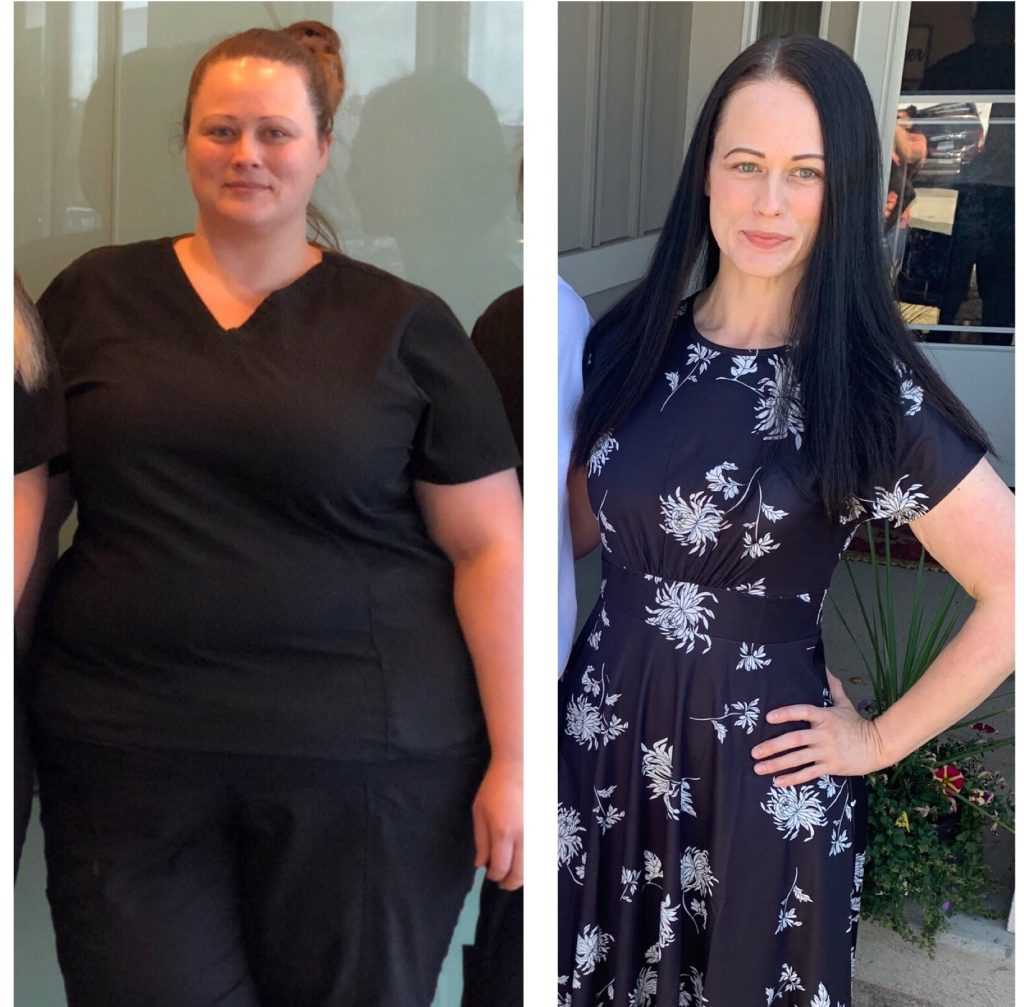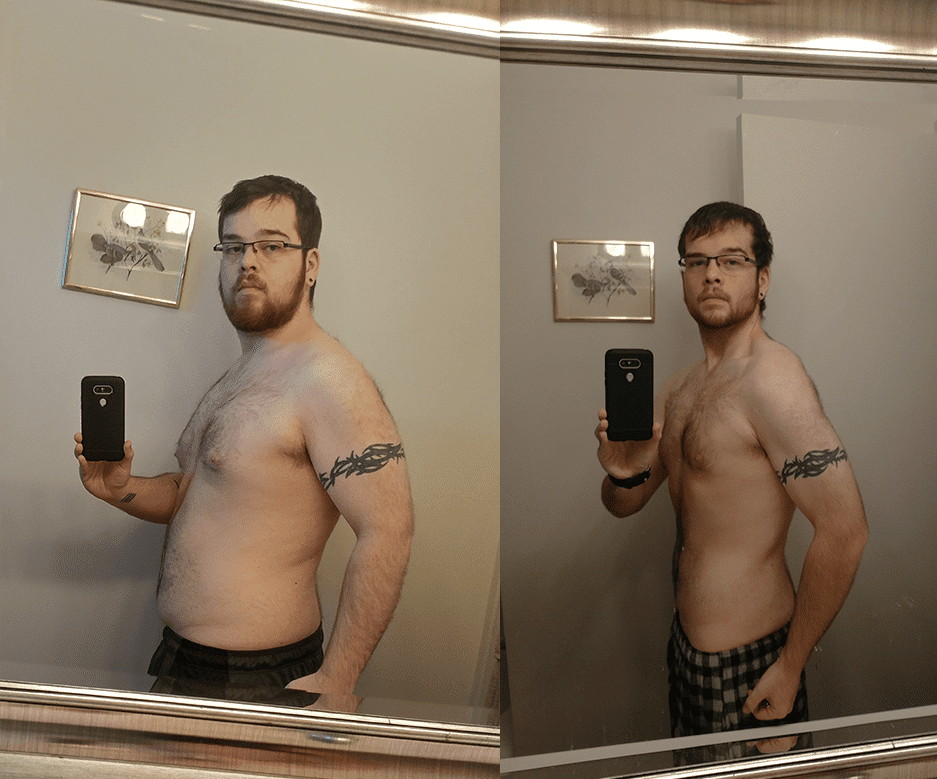How Fast Can You Lose 40 Pounds
How Fast Can You Lose 40 Pounds? Our Supplement has been taken by thousands of folks with no reported side effect. The only side effect you’ll be having is to spend money on new tight-fitting sexy clothing, or cancel your gym membership! It is safer than your daily multivitamin. It has natural ingredients and they’re extremely high quality, manufactured at an FDA-inspected, state-of-the-art facility, it’s on the latest equipment and then on the top of that they’re put through additional third-party inspections and quality control so you can rest assured that our supplement is safe.
Thank you for reading this post, don't forget to subscribe!
How Fast Can You Lose 40 Pounds? No need to hit the gym or follow those starving diet plans!
As your core temperature is addressed and metabolism is boosted, so you can expect stubborn fat to decrease from all over your body. You can also expect your skin to glow and feel plump and fresh. Your hair will get silkier and your joints pain will ease. Reports show that you can lose about 40 pounds in just 60 days of use of this supplement! No gym no diet plan needed!
(Here are some of our most satisfied customers and their reaction towards our product.)




How to Drop 40 Pounds Fast: A Comprehensive Guide
Did you know that over 70% of Americans struggle with weight management at some point in their lives? Losing 40 pounds may seem daunting, but with the right strategies, it’s entirely achievable in just a few months. This comprehensive guide will walk you through proven, sustainable methods to help you drop 40 pounds fast while maintaining your health and energy.
Understanding Realistic Expectations
Before diving into weight loss strategies, it’s crucial to set realistic expectations about your journey ahead. Losing weight too quickly can be harmful to your health and difficult to maintain long-term.
Timeframe for Healthy Weight Loss
The CDC recommends losing weight at a rate of 1-2 pounds per week for sustainable results. At this healthy pace, losing 40 pounds would realistically take between 20-40 weeks. While this might seem slow compared to what crash diets promise, this timeframe allows your body to adjust gradually and increases your chances of keeping the weight off permanently.
Why Sustainable Weight Loss Matters
Crash diets and extreme measures might help you drop pounds quickly, but they rarely lead to lasting results. When you lose weight too rapidly, you’re likely losing water weight and muscle mass rather than fat. This approach can slow your metabolism, making it harder to maintain weight loss in the future.
Instead, focus on creating sustainable lifestyle changes that you can maintain indefinitely. This approach not only helps you reach your goal but ensures you stay there.
Consult Your Doctor First
Before beginning any weight loss journey, especially one aimed at losing a significant amount of weight like 40 pounds, consult with your healthcare provider. Your doctor can:
- Assess your current health status
- Identify any underlying conditions that might affect your weight loss
- Provide personalized recommendations based on your medical history
- Help determine a healthy weight goal for your specific body type
Your doctor’s guidance ensures that your weight loss plan is both effective and safe for your individual needs.
Step-by-Step Guide to Dropping 40 Pounds Fast
Step 1: How Fast Can You Lose 40 Pounds – Create a Calorie Deficit
The fundamental principle behind weight loss is creating a calorie deficit—consuming fewer calories than you burn. This forces your body to use stored fat for energy, resulting in weight loss.
To create an effective calorie deficit:
- Calculate your daily calorie needs using an online TDEE (Total Daily Energy Expenditure) calculator
- Reduce your caloric intake by 500-1000 calories per day to lose 1-2 pounds weekly
- Track your food intake using apps like MyFitnessPal, Lose It!, or Cronometer
Remember that extremely low-calorie diets (below 1200 calories for women or 1500 for men) can be counterproductive and potentially dangerous. Your body needs adequate nutrition to function properly even during weight loss.
Step 2: Adopt an Effective Eating Plan
The quality of calories matters just as much as the quantity. Focus on nutrient-dense foods that provide essential vitamins and minerals while keeping you satisfied.
Cut out or significantly reduce:
- Added sugars and sweetened beverages
- Refined carbohydrates (white bread, pasta, pastries)
- Processed foods high in trans fats
- Artificial sweeteners, which can trigger cravings
Prioritize these foods instead:
- Lean proteins like chicken, turkey, fish, eggs, and plant-based options
- Non-starchy vegetables (spinach, broccoli, cauliflower, peppers)
- Complex carbohydrates (sweet potatoes, quinoa, oats)
- Healthy fats from avocados, nuts, seeds, and olive oil
Include protein at every meal to boost satiety, preserve muscle mass during weight loss, and slightly increase your metabolic rate. Aim for 25-30% of your daily calories from protein sources.
Step 3: Try Intermittent Fasting
Intermittent fasting has gained popularity as an effective weight loss strategy that doesn’t require counting calories or restricting specific foods.
This approach involves cycling between periods of eating and fasting, which can:
- Reduce overall calorie intake naturally
- Improve insulin sensitivity
- Enhance fat burning
- Simplify your eating schedule
Popular intermittent fasting methods include:
- 16/8 method: Fast for 16 hours and eat during an 8-hour window (e.g., eating between 12 pm and 8 pm only)
- 5:2 diet: Eat normally five days a week and restrict calories (500-600) on two non-consecutive days
- Eat-Stop-Eat: Complete 24-hour fasts once or twice per week
Start gradually with shorter fasting periods and extend them as your body adapts. Drink plenty of water during fasting periods to stay hydrated.
Step 4: How Fast Can You Lose 40 Pounds – Stay Hydrated and Limit Liquid Calories
Water plays a crucial role in weight loss and overall health. Proper hydration:
- Supports metabolism
- Reduces false hunger cues
- Helps eliminate waste products
- Improves exercise performance
Aim to drink at least 64 ounces (8 cups) of water daily. Many people find that drinking a glass of water before meals helps reduce portion sizes and prevents overeating.
Liquid calories can sabotage your weight loss efforts without providing satiety. Eliminate or strictly limit:
- Sugary sodas and fruit juices
- Energy drinks
- Specialty coffees with added syrups and whipped cream
- Alcoholic beverages, which are high in calories and can lower inhibitions around food choices
Replace these with water, unsweetened tea, black coffee, or water infused with fresh fruits or herbs for flavor.
Step 5: Increase Physical Activity
Exercise accelerates weight loss while improving cardiovascular health, building muscle, and boosting mood. For optimal results when trying to drop 40 pounds, combine different types of physical activity.
Cardiovascular Exercise:
- Start with 150 minutes of moderate-intensity cardio per week (30 minutes, 5 days a week)
- Gradually increase duration and intensity as your fitness improves
- Try activities like walking, jogging, cycling, swimming, or dancing
Strength Training:
- Include 2-3 strength sessions weekly
- Focus on compound movements that work multiple muscle groups (squats, deadlifts, push-ups)
- Building muscle increases your resting metabolic rate, helping you burn more calories even at rest
HIIT (High-Intensity Interval Training):
- Alternate between short bursts of intense activity and rest periods
- These efficient workouts can be completed in 20-30 minutes
- HIIT continues burning calories hours after your workout ends
Stay consistent by:
- Finding activities you genuinely enjoy
- Setting a regular exercise schedule
- Finding a workout buddy for accountability
- Tracking your workouts to monitor progress
Step 6: Practice Mindful Eating
Mindful eating involves paying full attention to the experience of eating and drinking, both inside and outside the body.
Implement these mindful eating practices:
- Eat slowly and chew thoroughly (aim for 20-30 chews per bite)
- Put your fork down between bites
- Eliminate distractions during meals (no TV, phones, or computers)
- Pay attention to hunger and fullness cues
- Appreciate the colors, smells, textures, and flavors of your food
Simple mindful eating tricks include:
- Using smaller plates and bowls to control portions
- Serving food in the kitchen rather than family-style at the table
- Waiting 20 minutes before deciding on seconds (it takes time for your brain to register fullness)
These practices help prevent overeating and increase satisfaction from smaller portions of food.
Step 7: Cook Healthy Meals at Home
Restaurant meals typically contain more calories, salt, and fat than home-cooked alternatives. Taking control of your kitchen is essential for successful weight loss.
Benefits of home cooking include:
- Control over ingredients and cooking methods
- Better portion management
- Cost savings
- Awareness of exactly what you’re eating
Simple, healthy meal ideas:
- Breakfast: Greek yogurt with berries and a sprinkle of nuts; vegetable omelet with whole-grain toast
- Lunch: Large salad with grilled chicken, plenty of vegetables, and olive oil dressing; turkey and vegetable wrap
- Dinner: Baked salmon with roasted vegetables; stir-fry with tofu or lean meat and plenty of vegetables
- Snacks: Apple slices with a tablespoon of almond butter; carrot sticks with hummus; hard-boiled egg
Meal prep on weekends to ensure healthy options are readily available during busy weekdays. Prepare portions of proteins, cut vegetables, and cook whole grains in advance.
Step 8: Manage Late-Night Snacking
Evening eating is a common challenge for many people trying to lose weight. Nighttime snacking often involves mindless eating in front of the TV rather than responding to genuine hunger.
To control evening calories:
- Eat a satisfying dinner with adequate protein and fiber
- Brush your teeth after dinner to signal the end of eating
- Create a “kitchen closed” rule after a certain hour
- Drink herbal tea or water when cravings hit
- Find alternative activities to occupy your hands and mind (reading, crafting, taking a bath)
If you truly need a snack, choose low-calorie, nutrient-dense options:
- A small apple or pear
- A cup of air-popped popcorn
- A small handful of nuts
- Greek yogurt
- Cucumber slices with a tablespoon of guacamole
Step 9: Track Your Progress
Monitoring your weight loss journey provides motivation and helps identify what’s working and what isn’t.
Effective tracking methods include:
- Weight: Weigh yourself at the same time of day (preferably morning) 1-2 times per week
- Measurements: Track changes in waist, hip, chest, and thigh circumference monthly
- Photos: Take progress pictures in similar clothing and lighting every 2-4 weeks
- Food journal: Record everything you eat and drink to maintain awareness
- Exercise log: Document your workouts, including type, duration, and intensity
- Non-scale victories: Note improvements in energy, mood, sleep quality, and clothing fit
Use apps or a simple notebook to keep all this information organized. Review your data regularly to celebrate successes and make adjustments as needed.
Step 10: Stay Consistent and Patient
Consistency is the true secret to losing 40 pounds and keeping it off. Remember that weight loss isn’t always linear—you’ll experience plateaus and occasional setbacks.
Keys to maintaining consistency:
- Focus on progress, not perfection
- Plan for challenging situations like holidays and social events
- Develop strategies for managing stress without turning to food
- Get back on track immediately after any deviation from your plan
- Remember your motivation and revisit it regularly
- Celebrate non-food rewards when you reach milestones
Be patient with your body. Some weeks you might lose more weight than others. Trust the process and the science of calorie deficit—if you maintain healthy habits consistently, results will follow.
Common Mistakes to Avoid
Skipping Breakfast
Starting your day with a nutritious breakfast helps control hunger throughout the day and prevents overeating later. Research shows that regular breakfast eaters tend to maintain weight loss better than those who skip morning meals.
A balanced breakfast should include:
- Protein (eggs, Greek yogurt, protein powder)
- Fiber (oats, whole-grain toast, fruits)
- Healthy fat (nuts, seeds, avocado)
This combination provides sustained energy and keeps you satisfied until your next meal.
Falling for Fad Diets
The weight loss industry is full of quick-fix solutions promising dramatic results with minimal effort. These approaches rarely work long-term and can be harmful to your health.
Warning signs of fad diets include:
- Promises of losing more than 2 pounds per week
- Elimination of entire food groups
- Rigid rules about when and what to eat
- Claims not supported by scientific evidence
- Requirements to purchase special products or supplements
Instead, focus on making sustainable changes to your eating habits and activity levels that you can maintain for life.
Overdoing Exercise Too Quickly
Enthusiasm for fitness is great, but doing too much too soon can lead to injury, burnout, and discouragement.
Avoid exercise pitfalls by:
- Starting with moderate activity and gradually increasing intensity
- Including rest days in your weekly schedule
- Varying your workouts to prevent overuse injuries
- Listening to your body and scaling back when necessary
- Focusing on proper form rather than speed or weight
Remember that consistency trumps intensity for long-term weight loss success.
Success Stories for Motivation
Real-Life Weight Loss Journeys
Sarah’s Story: At 45, Sarah lost 42 pounds over 7 months by walking daily and adopting a Mediterranean diet. She focused on smaller portions and eliminated processed foods. Her key insight: “Weight loss happens in the kitchen, fitness happens in the gym.”
Michael’s Journey: Michael dropped 45 pounds in 8 months through intermittent fasting and strength training 3 times weekly. He credits his success to meal prepping on Sundays and tracking his food intake daily.
Jennifer’s Transformation: After years of yo-yo dieting, Jennifer lost 40 pounds in 10 months by focusing on whole foods and managing stress through yoga. She emphasized that changing her mindset about food was more important than any specific diet plan.
Common Success Factors
Despite different approaches, successful weight loss stories share common elements:
- Consistency: Sticking with healthy habits even when progress slows
- Portion awareness: Paying attention to serving sizes and hunger cues
- Planning ahead: Preparing for challenging situations and having healthy options ready
- Support systems: Enlisting friends, family, or online communities for encouragement
- Self-compassion: Treating setbacks as learning opportunities rather than failures
- Focus on health: Celebrating non-scale victories like improved energy and better sleep
Frequently Asked Questions (FAQs)
Q: Is it safe to lose 40 pounds fast?
A: Yes, if done responsibly by following a balanced diet and regular exercise plan. The safest approach is losing 1-2 pounds per week, which means 40 pounds would take approximately 20-40 weeks. This timeframe allows for sustainable fat loss while preserving muscle mass and metabolic health.
Q: Can I still eat out while trying to lose weight?
A: Absolutely, but make smart choices when dining out. Look for grilled, baked, or steamed options instead of fried foods. Ask for sauces and dressings on the side, avoid bread baskets and chips before meals, and consider sharing an entrée or taking half home. Research menu options in advance when possible to identify healthier choices.
Q: What are the best exercises for losing 40 pounds?
A: The most effective approach combines cardio exercise for calorie burning with strength training to preserve and build muscle. Good cardio options include walking, jogging, cycling, swimming, and dance fitness classes. For strength training, focus on compound movements like squats, lunges, push-ups, rows, and planks that work multiple muscle groups simultaneously.
Q: How Fast Can You Lose 40 Pounds – How do I break through weight loss plateaus?
A: Plateaus are normal during weight loss journeys. To overcome them:
- Recalculate your calorie needs (they decrease as you lose weight)
- Mix up your exercise routine to challenge your body in new ways
- Track your food intake more carefully to identify hidden calories
- Focus on quality sleep and stress management
- Consider trying intermittent fasting if you haven’t already
- Add more protein and fiber to increase satiety
- Stay patient and consistent—plateaus eventually pass
Q: Will I have loose skin after losing 40 pounds?
A: This depends on several factors including your age, genetics, how quickly you lose weight, and how long you carried the extra weight. To minimize loose skin:
- Lose weight gradually (1-2 pounds per week)
- Stay hydrated to maintain skin elasticity
- Include strength training to build muscle underneath the skin
- Eat foods rich in collagen and vitamin C
- Consider dry brushing and moisturizing to improve skin tone
Conclusion
Dropping 40 pounds is a significant achievement that can dramatically improve your health, energy levels, and quality of life. By creating a calorie deficit through mindful eating and increased physical activity, you can reach this goal safely and effectively.
Remember that successful weight loss involves both physical and psychological components. Developing a healthy relationship with food, managing stress, and building consistent habits are just as important as counting calories or exercise minutes.
Ready to transform your life? Commit to making one change at a time, and watch as those 40 pounds melt away! With the comprehensive strategies outlined in this guide to how to drop 40 pounds fast, you have all the tools needed to succeed in your weight loss journey.

![26 Best Wallpapers for iOS 26 Lock Screen [4k] Direct Download 26 Best Wallpapers for iOS 26 Lock Screen [4k] Direct Download](https://i2.wp.com/techpp.com/wp-content/uploads/2025/06/Best-wallpapers-for-iOS-26-lockscreen.jpg?w=300&resize=300,300&ssl=1)


